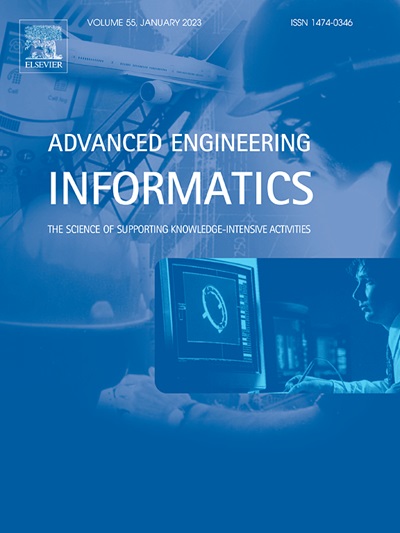Predicting water demand for spraying operations in dry bulk ports: A hybrid approach based on data decomposition and deep learning
IF 8
1区 工程技术
Q1 COMPUTER SCIENCE, ARTIFICIAL INTELLIGENCE
引用次数: 0
Abstract
Dust pollution from materials in dry bulk ports (DBPs) significantly impacts air quality and public health in coastal cities. Spraying operations are the primary dust control measures in ports and accurately predicting water demand for these operations helps optimize water scheduling and conserve resources. However, challenges remain in addressing non-stationary time series and improving prediction accuracy. Additionally, existing studies rarely consider the impacts of port operations on water demand for spraying. Therefore, this study proposes a hybrid approach based on data decomposition and deep learning to predict water demand for spraying operations in DBPs. Port operational data is specifically integrated into the input features. An optimal variational mode decomposition (OVMD) method is introduced to reduce data non-stationarity. Compared to other methods, OVMD adaptively selects the optimal modes and effectively mitigates mode mixing issues. The 1-D Convolutional Neural Network integrated with an Attention BILSTM model, combined with OVMD, an Artificial Neural Network, and Error Correction, is employed to capture long-term temporal dependencies. Moreover, the relationship between material surface moisture content and water consumption for spraying operations is uniquely incorporated into the prediction process. This approach is compared with benchmark models using a dataset from a DBP in northern China. The results demonstrate that the proposed method achieves superior predictive performance, with a MAE of 0.47, a RMSE of 0.71, and an R2 of 0.95. The proposed approach enables port operators to accurately determine water consumption for spraying operations, thereby promoting the intelligent and sustainable development of dust control in DBPs.
干散货港口(DBPs)物料产生的粉尘污染严重影响了沿海城市的空气质量和公众健康。喷洒作业是港口的主要粉尘控制措施,准确预测这些作业的用水需求有助于优化用水调度和节约资源。然而,在处理非平稳时间序列和提高预测精度方面仍然存在挑战。此外,现有研究很少考虑港口作业对喷洒用水需求的影响。因此,本研究提出了一种基于数据分解和深度学习的混合方法,用于预测 DBPs 中喷洒作业的用水需求。港口作业数据被特别整合到输入特征中。研究引入了最优变异模式分解(OVMD)方法来降低数据的非平稳性。与其他方法相比,OVMD 可自适应地选择最佳模式,并有效缓解模式混合问题。与注意 BILSTM 模型集成的一维卷积神经网络,结合 OVMD、人工神经网络和误差校正,用于捕捉长期时间依赖性。此外,还将材料表面含水量与喷洒作业耗水量之间的关系独特地纳入了预测过程。利用中国北方一个 DBP 的数据集将该方法与基准模型进行了比较。结果表明,所提出的方法具有出色的预测性能,MAE 为 0.47,RMSE 为 0.71,R2 为 0.95。所提出的方法可帮助港口运营商准确确定喷洒作业用水量,从而促进 DBP 扬尘控制的智能化和可持续发展。
本文章由计算机程序翻译,如有差异,请以英文原文为准。
求助全文
约1分钟内获得全文
求助全文
来源期刊

Advanced Engineering Informatics
工程技术-工程:综合
CiteScore
12.40
自引率
18.20%
发文量
292
审稿时长
45 days
期刊介绍:
Advanced Engineering Informatics is an international Journal that solicits research papers with an emphasis on 'knowledge' and 'engineering applications'. The Journal seeks original papers that report progress in applying methods of engineering informatics. These papers should have engineering relevance and help provide a scientific base for more reliable, spontaneous, and creative engineering decision-making. Additionally, papers should demonstrate the science of supporting knowledge-intensive engineering tasks and validate the generality, power, and scalability of new methods through rigorous evaluation, preferably both qualitatively and quantitatively. Abstracting and indexing for Advanced Engineering Informatics include Science Citation Index Expanded, Scopus and INSPEC.
 求助内容:
求助内容: 应助结果提醒方式:
应助结果提醒方式:


